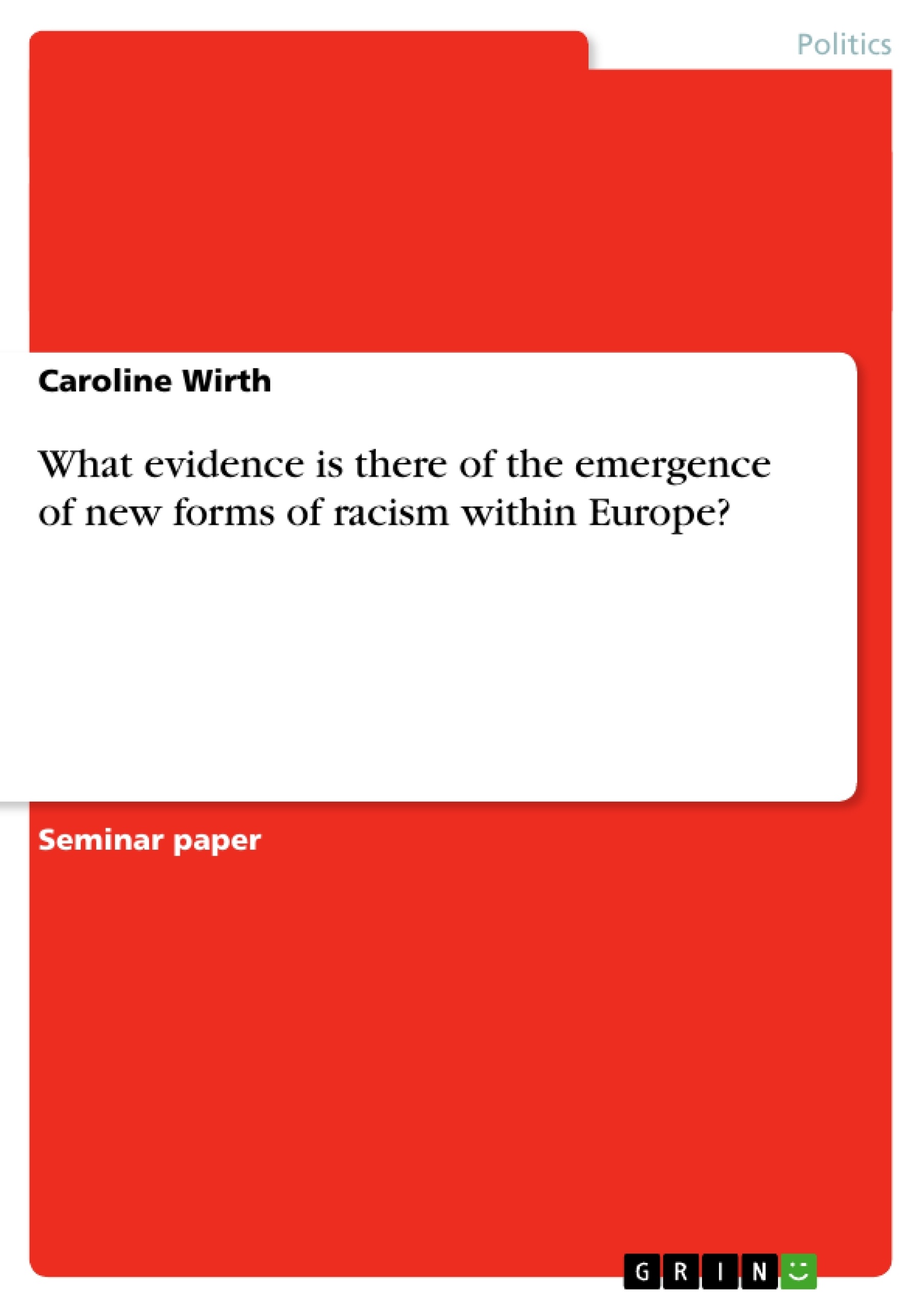Racism changes over time it adapts to the current circumstance therefore, it is not a new form racism. At the moment Europe is in the geographical and in the political sense unfinished and unsure about its future. People living in this circumstance reflect that insecurity and have the need for justifications. Right-wing politicians blame foreigners and on that basis find easy solutions to complex problems. Racism is not a mysterious phenomenon, but the question remains when, why and by what actors it is used as a strategy of domination, and what kind of conditions can stimulate this use. Therefore, this essay will outline old racism and illustrate its occurrence with examples of Nazi-Germany. Secondly, new forms of racism will be explained. The new right attracts both working class and middle class voters. This essay will argue that unemployment, violence and crime, and the abuse of the social welfare state are issues problematised by the new right to gain votes. And finally, it will demonstrate that the European Union stimulates racism in a direct and indirect way.
The concept of old racism was based on biological discrimination. The example of Nazi- Germany will be used as it had enormous consequences for the country and the world. The Aryan race was defined as superior to all others. The Nazis needed to blame someone for the economic and social misery of the 1920s, and the failure of the Weimar Republic. People where insecure about the future and unsatisfied about the present partly because of high unemployment and devaluation of money. As a result the UNESCO proved racism on biological grounds is a falsification of the scientific basis (Miles and Brown 2003 p. 59). Until the 1980s Germany became very cautious in using the word racism in the context of migrant workers as it was argued to be an offence against the Jews and Gypsies. Cox actually defined old racism as a “rationalisation of exploitation in the colonial time, where white people used it as a justification to suppress black people” (in Räthzel 2002 p. 4). Banton argues that the concept of the ideology originally referred to is dead. The analytical reason for Banton’s argument is that when black people joined capitalistic societies they still joined them on the bottom of society. This points to the fact that it is a “structural subordination rather than an ideological transformation” and not a racist.
Inhaltsverzeichnis (Table of Contents)
- Introduction
- Old racism
- New racism
- How the new right uses racism
- How the European Union stimulates racism
Zielsetzung und Themenschwerpunkte (Objectives and Key Themes)
This essay aims to analyze the emergence of new forms of racism within Europe. It explores how racism has evolved and adapted to changing circumstances, focusing on the distinction between old and new racism and its manifestation in contemporary European society.
- The evolution of racism from biological discrimination to cultural differences
- The role of the new right in utilizing and promoting racism
- The influence of the European Union in stimulating both direct and indirect forms of racism
- The connection between economic factors and the rise of racism
- The exploitation and marginalization of "the other" in European society
Zusammenfassung der Kapitel (Chapter Summaries)
- Introduction: Introduces the topic of the emergence of new forms of racism in Europe and sets the context for the discussion.
- Old racism: Defines and illustrates the concept of old racism through the example of Nazi Germany, highlighting its reliance on biological discrimination.
- New racism: Explains Baker's concept of new racism, emphasizing the shift from biological to cultural arguments and its focus on "difference" and the "need to respect it."
- How the new right uses racism: Examines how the new right, with its neo-liberal and neo-conservative strands, utilizes racism to gain political power and promote their agenda.
- How the European Union stimulates racism: Analyzes the direct and indirect ways in which the European Union contributes to the promotion of racism through its policies and identity-building measures.
Schlüsselwörter (Keywords)
The essay focuses on key terms and concepts such as old and new racism, neo-liberalism, neo-conservatism, cultural differences, European identity, "the other," exploitation, marginalization, and the role of the European Union in stimulating racism. The essay analyzes how these concepts intersect and influence contemporary European politics.
- Quote paper
- Caroline Wirth (Author), 2004, What evidence is there of the emergence of new forms of racism within Europe?, Munich, GRIN Verlag, https://www.grin.com/document/32112



